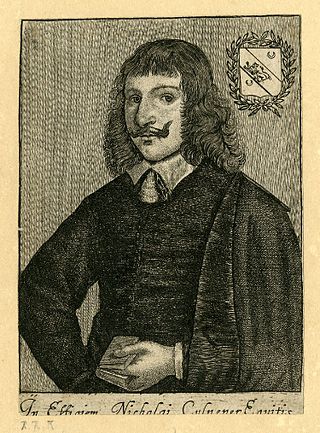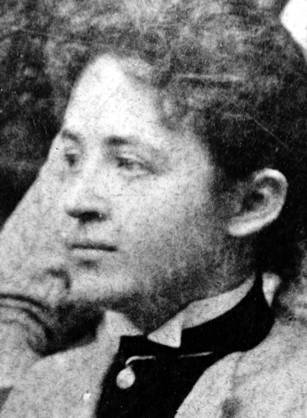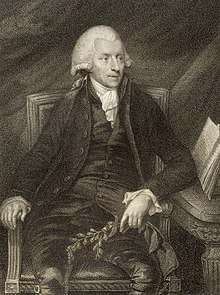
Digitalis is a genus of about 20 species of herbaceous perennial plants, shrubs, and biennials, commonly called foxgloves.

William Withering FRS was an English botanist, geologist, chemist, physician and first systematic investigator of the bioactivity of digitalis.

Laudanum is a tincture of opium containing approximately 10% powdered opium by weight. Laudanum is prepared by dissolving extracts from the opium poppy in alcohol (ethanol).

Digoxin, sold under the brand name Lanoxin among others, is a medication used to treat various heart conditions. Most frequently it is used for atrial fibrillation, atrial flutter, and heart failure. Digoxin is one of the oldest medications used in the field of cardiology. It works by increasing myocardial contractility, increasing stroke volume and blood pressure, reducing heart rate, and somewhat extending the time frame of the contraction. Digoxin is taken by mouth or by injection into a vein. Digoxin has a half life of approximately 36 hours given at average doses in patients with normal renal function. It is excreted mostly unchanged in the urine.

Digitoxin is a cardiac glycoside used for the treatment of heart failure and certain kinds of heart arrhythmia. It is a phytosteroid and is similar in structure and effects to digoxin, though the effects are longer-lasting. Unlike digoxin, which is eliminated from the body via the kidneys, it is eliminated via the liver, and so can be used in patients with poor or erratic kidney function. While several controlled trials have shown digoxin to be effective in a proportion of patients treated for heart failure, the evidence base for digitoxin is not as strong, although it is presumed to be similarly effective.

Bright's disease is a historical classification of kidney diseases that are described in modern medicine as acute or chronic nephritis. It was characterized by swelling and the presence of albumin in the urine, and was frequently accompanied by high blood pressure and heart disease.

Traditional medicine comprises medical aspects of traditional knowledge that developed over generations within the folk beliefs of various societies, including indigenous peoples, before the era of modern medicine. The World Health Organization (WHO) defines traditional medicine as "the sum total of the knowledge, skills, and practices based on the theories, beliefs, and experiences indigenous to different cultures, whether explicable or not, used in the maintenance of health as well as in the prevention, diagnosis, improvement or treatment of physical and mental illness". Traditional medicine is often contrasted with scientific medicine.

Nicholas Culpeper was an English botanist, herbalist, physician and astrologer. His book The English Physician is a source of pharmaceutical and herbal lore of the time, and Astrological Judgement of Diseases from the Decumbiture of the Sick (1655) one of the most detailed works on medical astrology in Early Modern Europe. Culpeper catalogued hundreds of outdoor medicinal herbs. He scolded contemporaries for some of the methods they used in herbal medicine: "This not being pleasing, and less profitable to me, I consulted with my two brothers, Dr. Reason and Dr. Experience, and took a voyage to visit my mother Nature, by whose advice, together with the help of Dr. Diligence, I at last obtained my desire; and, being warned by Mr. Honesty, a stranger in our days, to publish it to the world, I have done it."

Digitalis purpurea, the foxglove or common foxglove, is a poisonous species of flowering plant in the plantain family Plantaginaceae, native to and widespread throughout most of temperate Europe. It has also naturalised in parts of North America and some other temperate regions. The plant is a popular garden subject, with many cultivars available. It is the original source of the heart medicine digoxin. This biennial plant grows as a rosette of leaves in the first year after sowing, before flowering and then dying in the second year. It generally produces enough seeds, however, so that new plants will continue to grow in a garden setting.

Apothecary is an archaic English term for a medical professional who formulates and dispenses materia medica (medicine) to physicians, surgeons, and patients. The modern terms 'pharmacist' and 'chemist' have taken over this role.

Digitalis lanata, vernacularly often called woolly foxglove or Grecian foxglove, is a species of foxglove, a flowering plant in the plantain family Plantaginaceae. It gets its name due to the woolly indumentum of the leaves. D. lanata, like other foxglove species, is toxic in all parts of the plant. Symptoms of digitalis poisoning include nausea, vomiting, severe headache, dilated pupils, problems with eyesight, and convulsions at the worst level of toxicity. The plant is also harmful to other animals.
Events from the year 1785 in Great Britain.
Charles Darwin was the eldest son of Erasmus Darwin (1731–1802) and Mary Howard (1740–70), and was the uncle of the famous naturalist Charles Robert Darwin. He showed considerable promise while studying medicine at the University of Edinburgh, but died while still a student.

Jonathan Stokes was an English physician and botanist, a member of the Lunar Society of Birmingham, and an early adopter of the heart drug digitalis.

Kate Campbell Hurd-Mead was a pioneering feminist and obstetrician who promoted the role of women in medicine. She wrote A History of Women in Medicine: From the Earliest of Times to the Beginning of the Nineteenth Century in 1938. She was born in Danville, Quebec, Canada, and died in Haddam, Connecticut, United States.

The history of pharmacy as a modern and independent science dates back to the first third of the 19th century. Before then, pharmacy evolved from antiquity as part of medicine. The history of pharmacy coincides well with the history of medicine, but it's important that there is a distinction between the two topics. Pharmaceuticals is one of the most-researched fields in the academic industry, but the history surrounding that particular topic is sparse compared to the impact its made world-wide. Before the advent of pharmacists, there existed apothecaries that worked alongside priests and physicians in regard to patient care.

Sir Michael David Rawlins was a British clinical pharmacologist and emeritus professor at the University of Newcastle upon Tyne. During his medical career he chaired several executive agencies including the Committee on Safety of Medicines from 1993 to 1998, followed by the National Institute for Health and Care Excellence (NICE) for 14 years from its formation in 1999 and then the Medicines and Healthcare products Regulatory Agency (MHRA) for six years from 2014. From 2012 to 2014 he was president of the Royal Society of Medicine.
Practicing without a license is the act of working without the licensure offered for that occupation, in a particular jurisdiction. Most activities that require licensure also have penalties for practicing without a valid, current license. In some jurisdictions, a license is offered but not required for some professions.
The history of herbalism is closely tied with the history of medicine from prehistoric times up until the development of the germ theory of disease in the 19th century. Modern medicine from the 19th century to today has been based on evidence gathered using the scientific method. Evidence-based use of pharmaceutical drugs, often derived from medicinal plants, has largely replaced herbal treatments in modern health care. However, many people continue to employ various forms of traditional or alternative medicine. These systems often have a significant herbal component. The history of herbalism also overlaps with food history, as many of the herbs and spices historically used by humans to season food yield useful medicinal compounds, and use of spices with antimicrobial activity in cooking is part of an ancient response to the threat of food-borne pathogens.
Ralph Cawley was an English clergyman and Oxford academic.
















